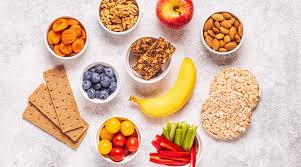
Living with diabetes doesn't mean you have to give up on snacking. In fact, smart snacking can be an integral part of a diabetic's diet plan. It can help manage hunger, provide energy, and maintain blood sugar levels throughout the day. The key is to choose snacks that are nutritious, low in sugar, and high in fiber.
Understanding the Snack Equation
For diabetics, every snack should be a balanced equation of carbohydrates, protein, and healthy fats. This balance helps slow down the absorption of glucose and prevents spikes in blood sugar levels. It's also important to consider the glycemic index (GI) of foods, opting for those with a low GI.
Vegetables: The Go-To Snack
Raw vegetables are an excellent choice for a low-calorie, high-fiber snack. Carrot sticks, cucumber slices, and cherry tomatoes can be paired with a healthy dip like hummus or Greek yogurt to add protein and flavor. Leafy greens, such as kale or spinach, can be turned into nutritious chips by baking them in the oven.
Nuts and Seeds: Nutrient Powerhouses
Nuts and seeds are great for snacking because they're rich in protein, fiber, and healthy fats. Almonds, walnuts, and chia seeds are particularly beneficial for diabetics. They can be eaten alone or added to yogurt and salads for a crunchy texture.
Fruits: Nature's Sweet Treat
While fruits contain sugar, they also provide essential vitamins and fiber. The best choices for diabetics are berries, apples, and pears, which have a lower GI. Pairing fruit with a protein, like cheese or nut butter, can help balance blood sugar levels.
Whole Grains: Sustained Energy
Whole grain snacks, such as popcorn or oatmeal, are high in fiber and have a lower GI than their refined counterparts. They provide a steady source of energy without causing a rapid increase in blood sugar. Look for snacks made from whole wheat, quinoa, or brown rice.
Dairy: Calcium-Rich Options
Low-fat dairy products are a good source of protein and calcium. Greek yogurt, cottage cheese, and string cheese are convenient snacks that can help keep blood sugar levels stable. Choose unsweetened varieties to avoid added sugars.
Protein Bars and Shakes: Convenient Choices
There are many protein bars and shakes designed specifically for diabetics. These products are formulated to have a low GI and provide a balanced mix of nutrients. However, it's important to read labels carefully to avoid those with high sugar content.
Homemade Snacks: Control and Creativity
Preparing snacks at home allows for control over the ingredients and portion sizes. Homemade trail mix, energy balls, and smoothies can be tailored to individual dietary needs and preferences. Using fresh, whole ingredients ensures that snacks are both healthy and delicious.
Hydration: An Essential Part of Snacking
Staying hydrated is important for everyone, but it's especially crucial for diabetics. Water, herbal teas, and other sugar-free beverages can complement snacks and help maintain hydration levels.
Portion Control: A Vital Practice
Portion control is essential when snacking. Even healthy snacks can lead to weight gain and blood sugar issues if consumed in large quantities. Using measuring cups or scales can help ensure appropriate serving sizes.
Conclusion
Snacking can be a healthy part of a diabetic's diet when done correctly. By choosing snacks that are low in sugar, high in fiber, and balanced in nutrients, diabetics can enjoy a variety of tasty options without compromising their health. With careful planning and smart choices, snacking can contribute to a well-rounded diabetic meal plan.
This article serves as a guide for diabetics to make informed choices about snacking. It emphasizes the importance of balance, portion control, and the selection of snacks that support blood sugar management and overall health.




